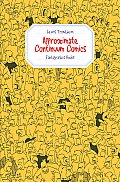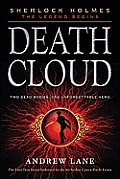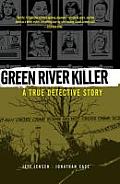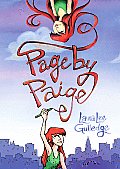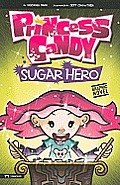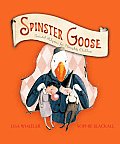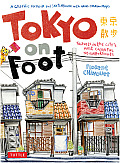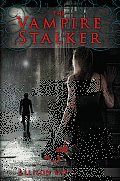Link to this review in the form of a comic strip by guest tagged fantasy
Link to this review by geneambaum tagged biography • graphic novel
Trondheim’s black and white autobiographical comics, originally published in 1993 and 1996, and published in English for the first time. He works in the studio and meets with many prominent French cartoonists, worries about the violence he’ll witness on a planned visit to the U.S., and deals with a Japanese publisher who is serializing The Fly (and demanding many, many changes to it). Trondheim and his wife also start a family and move to the country. Includes a funny episode from his childhood where he and his summer camp friends re-enact a scene from The Exorcist to convince others they’re possessed.
At the end, there are comments by Trondheim’s friends, family, and colleagues about how they’re depicted in the book.
Why I picked it up: Trondheim is my favorite cartoonist.
Why I finished it: At a party full of artists, after his friend Philippe Dupuy told a story about slicing off his fingertips, Trondheim feels like he’s going to puke. He excuses himself and goes outside the comic shop (Super Heroes, I think) and sits down on the curb. And then the famed Moebius walks by. “Ah shit. Moebius is looking at me. I must look really stupid.”
I’d give it to: Richard, who, in his heart, is more of a misanthrope than he generally lets on. I think Trondheim’s irritation with people would validate his feelings in the same way it made me feel good to see Trondheim waste time playing video games and fail repeatedly to deal with his growing belly.
Link to this review by flemtastic tagged mystery • coming of age
Young Sherlock Holmes is sent to live with distant relatives because his father is serving in India, his mother’s condition is delicate, and his older brother Mycroft is busy working for the British government. Mycroft hires a tutor, Amyus Crowe, to make sure Sherlock’s time is well spent, and to keep him out of trouble. But Crowe previously made a living running a spy network to pick up U.S. military deserters and criminals who had fled to Britain. Crowe has a very particular set of skills that make him a dangerous man, and he begins to teach the perspicacious Sherlock the techniques that will be at the heart of Sherlock’s investigations for years to come.
Sherlock’s involvement with a local ruffian named Matty gets him involved in trying to solve a mystery. Two men appear to have died of the plague, though they were covered in a mysterious yellow powder. Sherlock, Matty and Crowe soon find themselves in the midst of kidnappings and terrorist plots, and in need of brainy deductions.
Why I picked it up: It sounded like a 19th century version of Higson’s Young James Bond series and Anthony Horowitz’s Alex Rider books.
Why I finished it: It has its share of improbable escapes and nefarious criminals like The Baron, a creepy, paralyzed albino who moves via a framework with pulleys and ropes. But the core of this book is the development of Sherlock’s mind. Crowe forces him to think in unusual ways, always based on the facts of the situation. I could see Sherlock’s future self growing (Sherlock was thirty-three when introduced by Sir Arthur Conan Doyle).
I’d give it to: Chip, who would love the chase scene in the catacombs under the Thames.
Link to this review by flemtastic tagged thriller • history • mystery • graphic novel
Detective Tom Jensen was taken off his local police detail for the local police and assigned to the Green River Killer Task Force. A serial killer was murdering prostitutes. The assignment was supposed to be temporary, but the case dragged on for decades. There were so many leads investigated that computers were introduced to help the detectives catalog and investigate patterns in the crimes. After there had been no killings for a few years, Jensen was the only member of the task force. But then the investigation heated up because new DNA testing technology pointed to a suspect, Gary Ridgway. Ridgway soon accepted a plea bargain that involved cooperation with the police — he agreed to help solve cold cases by talking about his victims and even taking police to the hidden bodies.
Because the author, Jeff Jensen, is Tom’s son, this graphic novel includes the perspective of Jensen’s family as they watched him struggle with frustration and dead ends for decades.
Why I picked it up: Earlier in my life I was a golf coach. Once, when I was driving a van full of golfers to practice, we cut down through Maple Valley on the way to the course. We passed several TV station broadcasting vans and about ten police cars parked on the side of the road. That night I tuned into local news and found that Ridgway had been helping police locate buried bodies! When I heard that this book depicted those searches, I had to read it.
Why I finished it: The psychological tug-of-war between Ridgway and Jensen, demonstrated when Jensen has a breakdown because of dealing with such an evil man, and when Ridgway tells the police team, “It’s nice to be working with you.” The book also details his horrible exploits without ever becoming explicit.
I’d give it to: My neighbor, Beck, who watches America’s Most Wanted. She’d like that this book balances gory details with the human angle through the case’s effect on Jensen’s family and the victims’ loved ones.
Link to this review by geneambaum tagged graphic novel • coming of age
Paige Turner just moved to Brooklyn with her parents, and she feels very alone. She’s trying out her grandma’s rules on how to become a self-taught artist. (“Rule #1: No more excuses!”) Her sketchbook becomes a place for the screaming, scheming Paige that no one knows. She finds friends, love, and the artist inside herself.
Why I picked it up: Unshelved reader Benjamin Murphy suggested I review this graphic novel.
Why I finished it: I loved a lot of the images and the layouts. After Paige starts on Rule #2 (“Draw what you know. If you feel it or see it…DRAW IT!), there’s an amazing two-page spread of things she likes about New York. The background is a city silhouette of skyscraper shapes, while the panels on top show a building with its top dissolving in the fog, weird trash, a discarded shoe, a bearded man wearing a dress, dead umbrellas, and more.
I’d give it to: Dan, who liked Linda Barry’s book about creativity, What It Is, because this seems like a great fictional counterpart to her thoughts and encouragement.
Link to this review by geneambaum tagged superhero • graphic novel
On Halo Nightly’s eleventh birthday, she gets a special present from her Aunt Pandora — a box containing candy. When she eats a piece, she gets temporary superpowers that vary by the type of candy she chose. Halo doesn’t feel worthy of the gift, but she uses her powers to defeat threats at school: the cheating Doozie Hiss and her hair, a hungry mermaid, and the Green Queen.
Why I picked it up: The princess on the cover reminded me of Starfire in Teen Titans Go! because joy emanates from both.
Why I finished it: I really loved the character design. Color and thick, smooth lines are used to great effect to make Halo and other characters recognizable and their emotions easy to identify.
I also liked the way that, when a character’s feeling is particularly strong, it takes over the background of the panel. When Doozie Hiss gets the highest grade on a science test, there are stars and hearts and spirals all around her. The background changes from the classroom to pink focus lines.
I’d give it to: My daughter’s friend, Cara. Her parents severely restrict her candy intake, and I’d like to see if this gift pushes them over the edge.
Link to this review by billba tagged classic • picture book • humor
Familiar nursery rhymes reimagined for modern children (with modern morals).
Why I picked it up: I couldn’t have been less interested in another funny take on Mother Goose, but The Chalk-Eater begins:
Little Miss Muffet
sits on her tuffet,
but what does she hide in her skirts?
The box says ‘non-toxic.’
She calls it her chalk-lit,
though each piece tastes something like dirt.
I was hooked.
Why I finished it: I am a sucker for good parody, and this is top notch and truly hilarious. The rhythm and meter are flawless, and the targets (obsessive behavior, bad teachers, bullies) are dark and compelling.
I’d give it to: Bonnie, a home-schooled kid whose mom keeps her in line by threatening her with private school. The one depicted here is particularly terrifying.
Link to this review by sarahhunt tagged art • nonfiction • coffee table book
Chavouet spent six months in Tokyo while his partner Claire worked there as an intern. He spent his time biking around the city and drawing what he saw: people, buildings, monuments, shops, bugs, money, snacks and more. The book collects his drawings and notes.
Why I picked it up: I flipped through a copy of the original French edition at my parents’ house and was fascinated by the detailed drawing of the odd light fixture in his Tokyo apartment.
Why I finished it: Chavouet travels like I want to, by immersing himself in the ordinary lives of the city and soaking up the details around him. I felt like I got a much better idea of what Tokyo is like than I could ever get from a guidebook.
I’d give it to: Jen, for the complaints that seem so French: he gets bike parking tickets all over the city, no French comics in the bookstore, no French-fry vendors at the beach! She’ll also like that Chavouet put all of the stickers from the fruit he bought in his sketchbook.
Link to this review by danritchie tagged romance • paranormal
Amy is in love with the brooding, ruggedly handsome hero in the Otherworld novels. After a chance encounter with a boy who eerily resembles Alexander Banks, a vampire hunter in the books, she discovers Otherworld is actually a parallel dimension and the evil vampire, Vigo, is in her world. Amy, with her physicist-turned-librarian ally, decides to help Alexander navigate modern Chicago so he can find and kill the vampire.
Why I picked it up: I enjoyed Van Diepen’s Snitch because of its portrayal of characters with totally different perspectives and wondered how she would play out the differences between modern Amy and Alexander, who is from a world that developed much differently due to vampires.
Why I finished it: Alexander’s world is still Victorian, and it was fun to see him discovering a modern world with its totally different norms (people go out after dark) and technology (Amy shows him how to text) which he is able to use to his advantage. And who can resist a librarian that can discover portals to a parallel world?
I’d give it to: Rosie, a Twilight fan looking for another heroine smitten by a dark-yet-charmingly-handsome guy.


